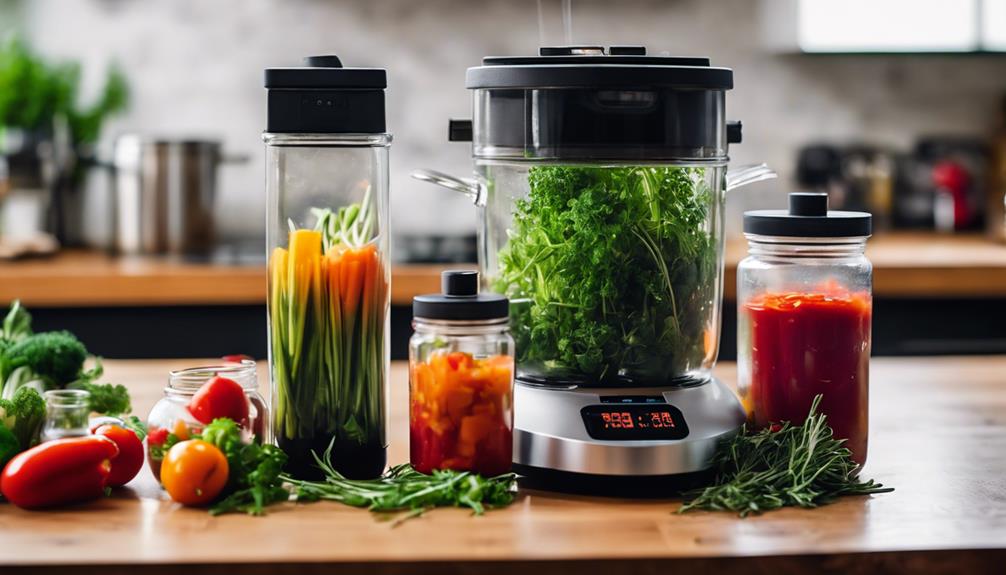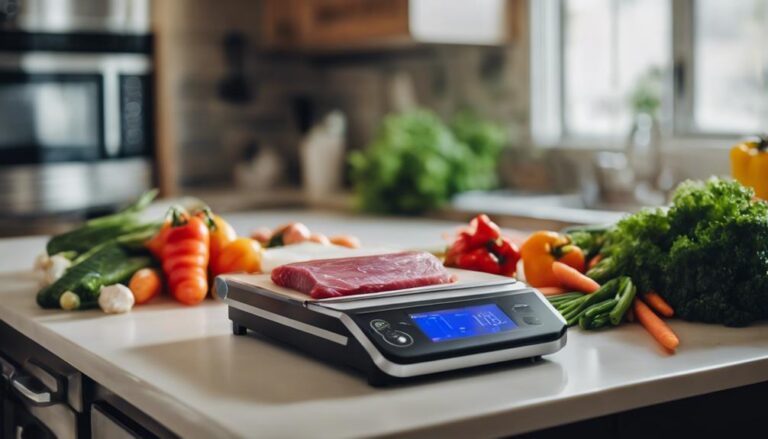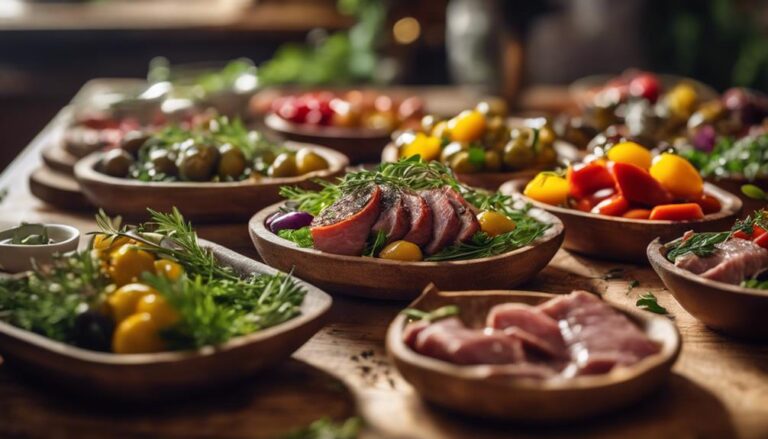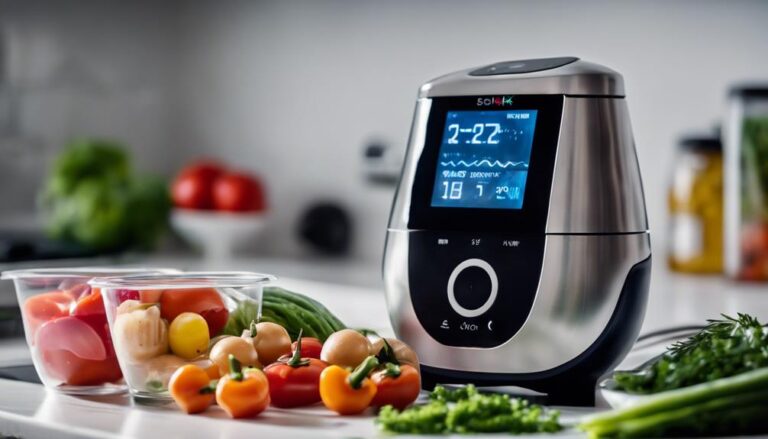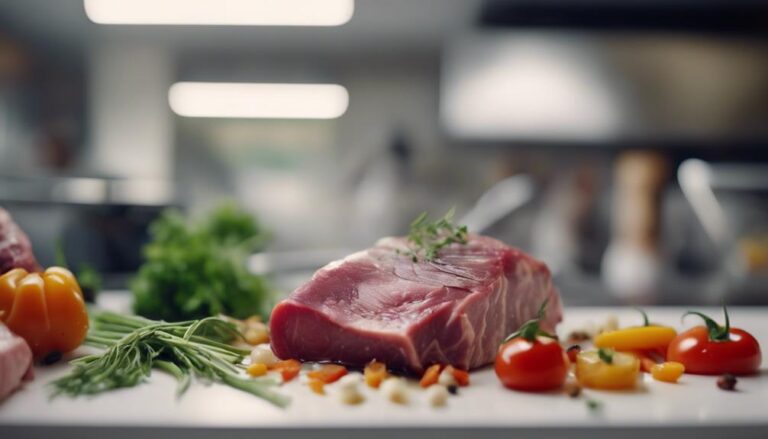How to Make Delicious Low-Calorie Sous Vide Sauces
I've found that making delicious low-calorie sous vide sauces is straightforward and rewarding. First, I gather essential tools like an immersion circulator and pint-sized jars. I use key ingredients, such as large egg yolks for richness and apple cider vinegar for acidity. I preheat my water bath to 167°F, seal my ingredients in a jar, and cook for about 30 minutes. Afterward, I blend the contents for a smooth texture. For storage, I keep sauces in airtight jars and gently reheat when needed. These sauces are versatile, enhancing proteins and veggies, while keeping calories low—you'll discover even more ways to elevate your meals.
What You Will Learn Here
- Use large egg yolks, vinegar, and fresh herbs to create rich, low-calorie flavor profiles in your sauces.
- Preheat your water bath to 167°F and seal ingredients in pint-sized jars for optimal cooking.
- Cook sauces for 30 minutes to enhance flavor infusion while maintaining precise temperature control.
- Blend cooked sauces with an immersion blender for a creamy, luxurious texture without added calories.
Benefits of Sous Vide Sauces
Sous vide sauces offer precise temperature control, which prevents overcooking and creates a creamy, luxurious texture without extra calories from fats or thickeners.
This innovative approach to cooking allows me to explore a world of low-calorie sauces that don't skimp on flavor.
The sous vide method excels at enhanced flavor infusion, letting ingredients blend together in a sealed environment.
This results in richer taste profiles that keep calorie counts impressively low.
Essential Tools for Sous Vide
To create delicious sous vide sauces, I rely on a few essential tools that guarantee precision and ease throughout the cooking process.
First and foremost, an immersion circulator is vital for maintaining the exact water temperature needed for sous vide cooking. It guarantees that my sauces cook evenly and reach just the right consistency.
Next, I use a stockpot or a specialized sous vide container to hold the water. This provides ample space for the sous vide bags, which contain my ingredients. Speaking of sous vide bags, they're important for sealing in flavors and preventing water from entering, so I often opt for high-quality vacuum sealers to create an airtight environment.
Once my sauces have cooked, I turn to an immersion blender. This handy tool allows me to achieve a smooth, consistent texture without any lumps.
For making and storing my sauces, I also find pint-sized canning jars to be incredibly useful. They simplify the blending process and help keep everything mess-free.
Key Ingredients to Use
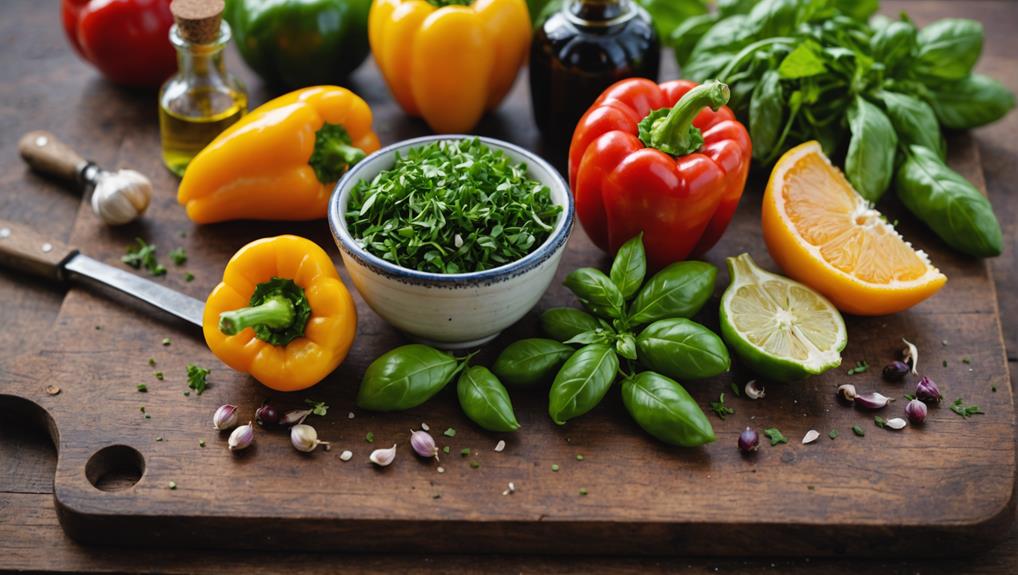
When crafting low-calorie sous vide sauces, I focus on key ingredients that enhance flavor without piling on the calories.
Starting with large egg yolks as a base, I find they provide richness while remaining a low-calorie source of flavor and texture. To add acidity, I incorporate apple cider vinegar and fresh lemon juice, which elevate the overall taste profile without significant calorie addition.
For a touch of indulgence, I opt for unsalted butter or a gourmet butter alternative, limiting the amount to just 1/2 cup plus 2 tablespoons. This allows me to achieve a creamy texture while keeping the calorie count in check. I also consider adding minced shallots for depth and a subtle sweetness that complements the sauce beautifully.
Herbs and spices play an essential role in my sauces, infusing them with vibrant flavors while keeping calories low. Whether it's fresh basil, thyme, or a pinch of cayenne, these ingredients create a dynamic sauce that enhances any dish.
Step-by-Step Cooking Process
I begin by preheating the water bath to around 167°F, ensuring precise cooking control for my sauces.
Next, I gather my key ingredients, which typically include egg yolks, butter, and an acid like lemon juice or vinegar. I combine these ingredients in a pint-sized jar and seal it finger-tight to prevent any water from entering during the sous vide cooking process.
Once the water bath reaches the desired temperature, I submerge the jar completely, then let it cook for about 30 minutes. This step allows the flavors to meld beautifully while keeping the calorie content low.
After the cooking time is up, I retrieve the jar and grab my immersion blender. Blending the contents until smooth and thick enhances the sauce's texture, making it rich without added calories.
Storing and Reheating Sauces
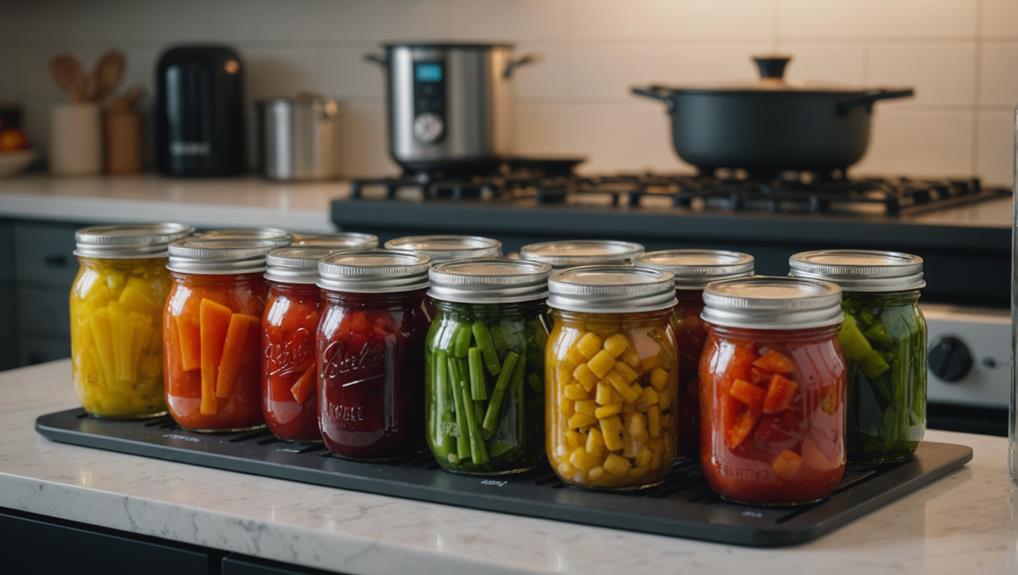
Storing sous vide sauces properly guarantees they remain flavorful and safe to enjoy for up to two weeks. To achieve this, I recommend using pint-sized canning jars that provide airtight storage, confirming the integrity of the sauce.
When I store sauces, I make sure to leave a little space at the top of the jar to prevent breakage during reheating due to thermal shock.
Here are a few tips for storing and reheating your sous vide sauces:
- Always use airtight containers to prevent spoilage.
- Label jars with the date to keep track of freshness.
- When reheating, gently submerge the jar in a water bath or use the microwave, stirring or blending afterward for consistency.
These techniques not only extend the shelf life of your sauces but also enhance your culinary experience when you finally serve them.
Creative Uses for Sauces
Sous vide sauces offer a versatile way to transform everyday meals into gourmet experiences, enhancing flavors without piling on calories. I love using these sauces as marinades for lean proteins like chicken and fish. Just a quick soak in a low-calorie sauce before sous vide cooking can infuse incredible flavor while keeping the dish light. It's a fantastic method to enhance flavor without compromising health.
I also find that sous vide sauces work wonders with vegetables. By drizzling them over roasted or steamed veggies, I elevate their taste, making my meals more enjoyable and nutritious. Another creative use is as dressings for salads or grain bowls; these sauces add moisture and flavor without the guilt of high-calorie options.
If I'm in the mood for soups or stews, I'll stir in a small amount of sous vide sauce to enrich the depth of flavor. This technique allows me to enjoy a satisfying dish without greatly increasing calories.
With these creative applications, sous vide sauces truly shine, making every meal an opportunity to innovate and enjoy delicious flavors.
Tips for Flavor Enhancement
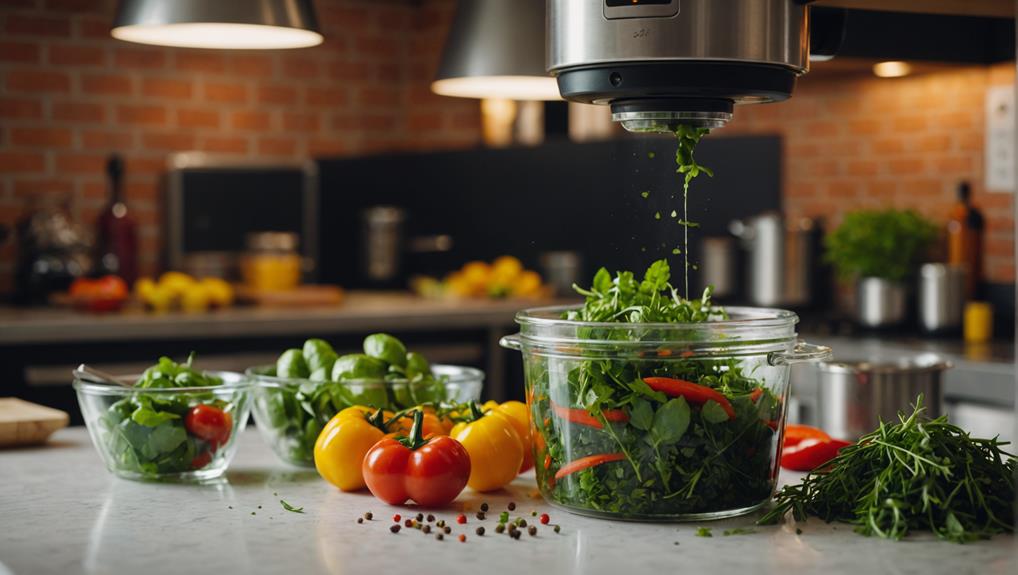
Enhancing flavors in sous vide cooking is all about incorporating bold herbs and spices that elevate your dishes without adding extra calories. To truly excel in flavor enhancement, I focus on techniques that maximize taste while keeping my sauces light. Here are a few strategies I've found effective:
Bloom spices: I often bloom herbs and spices in a small amount of oil before mixing them into my sous vide bags. This process intensifies their flavor, making my sauces more aromatic.
Use fresh citrus: Adding fresh lemon or lime juice after cooking brings brightness and depth to my sous vide sauces, keeping calorie counts low while enhancing the overall flavor.
Low-sodium broths: I love experimenting with low-sodium broths or stocks as a base. They provide rich flavor without the excess sodium, making my sauces healthier.
Utilize collected juices: I make sure to use the juices collected during sous vide cooking. They serve as a fantastic foundation for sauces, maximizing flavor while minimizing waste.
Frequently Asked Questions
How Do You Make Sous Vide More Flavorful?
To make sous vide more flavorful, I focus on herb infusion, ensuring flavor layering with spices, and achieving spice balance. Adding a touch of acid brightness really enhances the overall dish, creating a vibrant taste experience.
Is Sous Vide the Healthiest Way to Cook?
I believe sous vide is one of the healthiest cooking techniques. Its benefits include superior nutrient retention compared to traditional methods, making health comparisons favor sous vide for flavorful, low-calorie meals without sacrificing essential vitamins.
Can You Cook Sauces in a Sous Vide?
Absolutely, I love using sous vide techniques for sauces! It guarantees perfect sauce consistency while employing infusion methods for rich flavors. Plus, I can focus on flavor balancing without worrying about temperature control issues.
What Tastes Good Sous Vide?
When I explore what tastes good sous vide, I love using creative sous vide seasonings and unique herb combinations. Flavor infusion techniques elevate dishes, while thoughtful food pairing suggestions enhance every bite, making each meal a culinary adventure.
Conclusion
To sum up, making low-calorie sous vide sauces is a simple and rewarding process.
By utilizing the right tools and ingredients, you can create flavorful sauces that enhance your meals without adding unnecessary calories.
Whether you're storing them for later or using them creatively, these sauces can elevate a variety of dishes.
With a little practice and experimentation, you'll discover how versatile and satisfying sous vide sauces can be in your cooking routine.
